Court proposes new test to determine existence of Aboriginal right based on Indigenous legal system
From Canadian Lawyer Mag by Aidan Macnab November 7 2023
A Quebec court has proposed a new test for determining the existence of an Aboriginal right based on whether the right was protected in the traditional legal system of the Indigenous peoples claiming the right.

In 2019, a Quebec jury found Derek White guilty of defrauding and conspiring to defraud the Canadian government and found Hunter Montour guilty of participating in the activities of a criminal organization. The pair were involved in the importation of tobacco from the United States and convicted for evading tens of millions of dollars in excise taxes. White faced a maximum prison sentence of 14 years, and Montour faced up to five years.
Before trial, White and Montour, who are Mohawk, filed a notice of constitutional questions. They argued that ten Treaties negotiated between 1664 and 1760 and a Covenant Chain, which the court described as an “oral meta-treaty,” guaranteed the right of the Mohawk people to trade tobacco. White and Montour argued they also had an Aboriginal right to the tobacco trade, guaranteed by s. 35(1) of the Constitutional Act, 1982.
On Nov. 1, Justice Sophie Bourque ordered a permanent stay of proceedings in their criminal proceedings, agreeing with White and Montour that the Covenant Chain entitled them to trade tobacco and that their Aboriginal right to freely pursue economic development includes the right to engage in the trade.
The decision in R. c. White et Montour is “judicial pioneering,” says James O’Reilly, who represented White and Montour, along with co-counsel Nathan Richard, Gordon Campbell, and Vincent Carney. “In many respects, it’s a game-changing advancement of the law of Aboriginal peoples,” he says.
Caroline Briand, partner in the litigation group at Langlois Lawyers, says that the case is not merely about criminal law or the Indigenous right to trade tobacco. “It’s a case that deals with essential issues in Aboriginal law in 2023, including Indigenous people’s rights to self-determination.”
The ruling represents a shift from construing Aboriginal rights narrowly and stereotypically in a purely constitutional law context to construing Aboriginal rights within the spectrum of fundamental human rights, she says. Briand practises in Montreal and focuses on Indigenous, constitutional, administrative, professional, and disciplinary law. She was not involved in the White and Montour case.
“It is a momentous decision,” says Briand. “It’s really a reset moment for how we construe Aboriginal rights and how we approach a conversation about reconciliation and what it means to be a people.”
In a “breakthrough” on Indigenous self-determination, Justice Bourque departs from the Van der Peet test for determining whether a party has proven the existence of an Aboriginal right, says Briand. R. v. Van der Peet, 2 S.C.R. 507 is a Supreme Court of Canada case from 1996 that dealt with fishing rights. Van der Peet posits Aboriginal rights as “narrowly” and “stereotypically” defined practices that are “very territory-based,” she says.
Bourque acknowledged that Van der Peet does not suit proving “complex, collective, non-territorial rights,” or territory-based rights such as the right to self-determination, which are universal to Indigenous peoples in Canada and are sometimes referred to as “generic rights,” says Briand. Bourque recognized that it would be “prohibitive and unrealistic” to require Indigenous rights to align strictly with the Van der Peet test and prove nation-by-nation that they have a particular generic right. So, she proposed a new test focussed on whether the rights claimed were protected under the pre-existing Indigenous legal systems, she says.
The three-stage test involves identifying “the collective right that the Applicant invokes,” proving that “such a right is protected by his or her traditional legal system,” and showing that “the litigious practice or activity in question is an exercise of that right.”
In R. c. White et Montour, the applicants argued that the Treaties demonstrate that free trade was a central component of the relationship between the Haudenosaunee family – consisting of six nations, including the Mohawk – and the British Crown. The series of Treaties formed the Covenant Chain, which symbolized the alliance between the parties and recorded military, trade, and neutrality pacts, they said.
White and Montour also said the Crown failed to negotiate in good faith with the Mohawks of Kahnawa:ke, thereby infringing the honour of the Crown.
The Attorneys General of Canada and Quebec, who were intervenors, argued that the parties to the Treaties could not have intended to include a right to trade tobacco because the Mohawks did not traditionally do so, and the Treaties could not be read as allowing White and Montour to smuggle large quantities of it and evade taxation. The AGs said that none of the Treaties addressed tobacco trade explicitly, nor did they contain any provisions exempting the Mohawk from the regulation of trade. They argued that the Treaties that refer to trade concerned “the trade of fur in exchange for the necessaries of life, and not for the accumulation of wealth,” said the decision.
The Mohawk Nation Council of Chiefs was an intervenor and told the court that the Covenant Chain involves the procedural right of “communication, listening, and working together to resolve concerns” and is distinct from the common law right to consultation, said the decision.
Justice Bourque said it was undisputed and supported by the evidence that the Covenant Chain involved councils, which either party initiated. The relationship between the Haudenosaunee and the British evolved through these councils, she said.
To determine whether the Covenant Chain was a Treaty protected by s. 35(1), Bourque examined its obligations, whether the parties intended to create mutually binding obligations, whether it was solemnly concluded, and whether the Covenant Chain is now extinct. Section 35(1) states that “existing aboriginal and treaty rights of the aboriginal peoples of Canada are hereby recognized and affirmed.”
Bourque concluded that the Covenant Chain is “a peace and friendship alliance that includes a conflict-resolution procedure.” The Crown argued that the British only participated in the councils “as necessary diplomatic protocols, but not as importing substantive or procedural rights or obligations.” But the historical record, said Bourque, showed the British’s words and actions “conveyed their intention to establish mutually binding obligations with the Haudenosaunee.” The Attorneys General argued that the British were insincere and merely pretended to create mutually binding obligations “in pursuit of their colonialist agenda.” But Bourque rejected this suggestion because it would “contravene the legal principle of the honour of the Crown,” under which “the Crown is presumed to act, and to have acted, honourably in all its dealings with the Indigenous Nations.”
For Bourque, it is the relationship, not the instrument, which counts, says O’Reilly. “It’s a fantastic reality check for the whole issue of the relationship between the Aboriginal peoples and the Crown,” he says.
Bourque also rejected the Attorneys General’s argument that White and Montour were required to establish an Aboriginal or Treaty right to trade tobacco because the Covenant Chain provided a source of obligations that required specific issues be discussed in councils. The question, she said, was whether the Covenant Chain covers the regulation and imposition of excise duties on the tobacco trade. Bourque concluded that trade was among the topics for which council discussion was required.
While the law does not require “specific formality” to conclude a Treaty, it does require “a certain degree of solemnity,” said Bourque. The nature of the Covenant Chain, the words both parties used at its renewals, and the length of time these renewals covered “combined to bestow a solemn character,” she concluded.
Ultimately, Bourque found that the Covenant Chain is a Treaty recognized by s. 35(1) and rejected the argument that the Treaty is extinct.
O’Reilly says that even if the judgment is reversed, governments will have to deal with what was ascertained in it. “I’m of the view that this judgment is going to stand the test of time because it’s really common sense,” he says.

















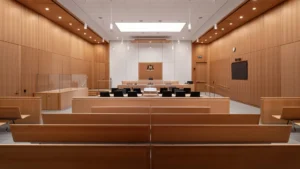
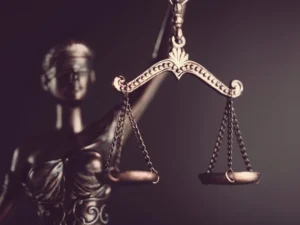






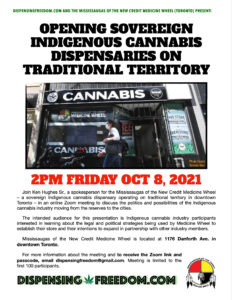








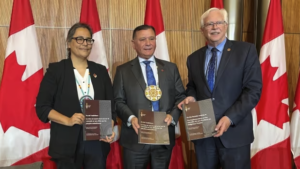



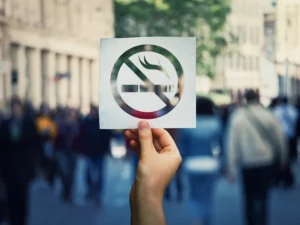
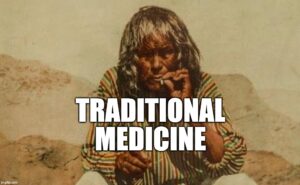
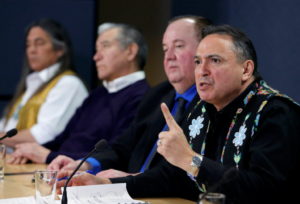


Comments are closed.